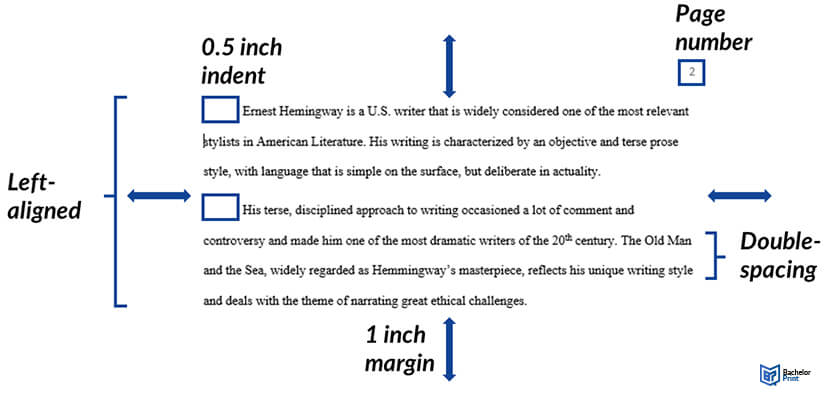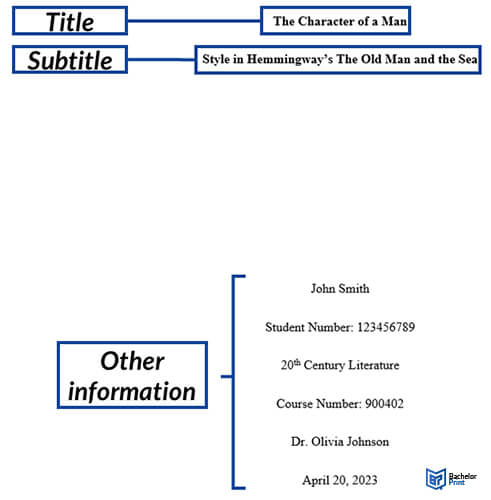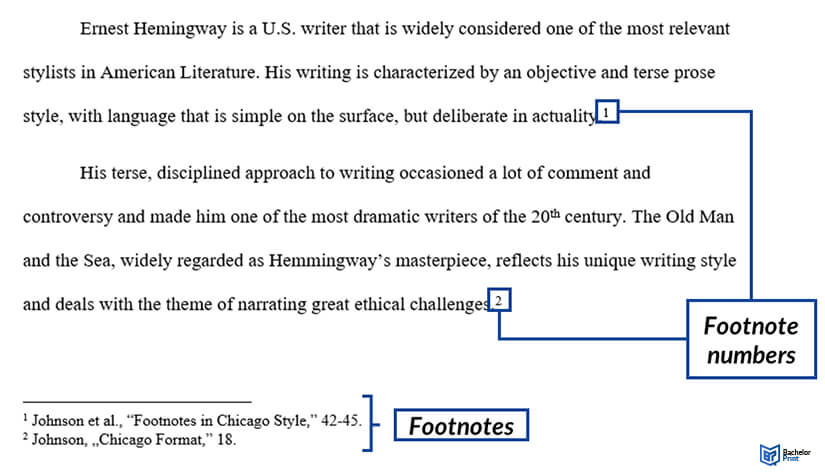
The Chicago format refers to the formatting guidelines for the Chicago style guide. It is a widely recognised citation format used in academic writing. Established by the University of Chicago Press, this style is distinctive by its specific approach to sources and its adaptability to the notes and bibliography, and author-date styles. While it is primarily prominent across historic fields and humanities, a vast variety of other fields favour the Chicago format due to its clarity and depth.
Definition: Chicago format
Chicago format is a set of guidelines that you’ll need to follow when using the Chicago style in academic work. Chicago format rules are published in the Chicago Manual of Style, and cover topics like font selection, text spacing, heading formatting, citation styles, use of numerals and acronyms, etc.
in Your Thesis
The general Chicago format
Chicago format states some guidelines regarding the general formatting of a page. These include:
- Using a readable font in a standard size (e.g., Times New Roman 12 pt.)
- Leaving a one-inch margin around all four sides of a page.
- The text must be set to double-spacing.
- The text must be left aligned. Avoid justified text.
- The first word in each paragraph is indented by ½ inch.
- Page numbers can be placed in the top right, leaving ½ inch from the edge of the page or bottom center.

Chicago format: Title page
In Chicago format, it’s not mandatory to add a title page, since the essay title only needs to be inserted once, at the top of the first page.
If coursework requirements include a title page, the correct Chicago format is:
- Place the title one-third down the page.
- If applicable, the subtitle goes in a new line, underneath the title. In this case, add a colon to the title.
- Your/your instructor’s name, student, course ID, date submitted, and other details are below the title.
- The details are placed approximately two-thirds down the page.
- All text on the title page should be centred and double-spaced.
- All text should use the same font type and size.
Note: Only use bold font and headline capitalization for the title and subtitles.

Chicago format: Headings
To follow the Chicago format, headings must use headline-style capitalization, where only main words are capitalized (pronouns, nouns, verbs, adjectives, and adverbs).
There are five different heading levels in Chicago format, which help structure the essay by following a clear hierarchy. Some of the structural purposes are outlined below.
Level 1 headings should be formatted to highlight their hierarchy, for example by using bold or italics font and keeping Level 2 headings in regular font.
Chicago format: Block quotes
Certain quotations, such as multi-line poetry quotes, those with 100+ words, and those that extend over 5+ lines, must follow the Chicago format for block quotes.
- Use single spacing throughout the quote
- Indent it by ½ inch
Chicago format: Numbers and acronyms
In Chicago format, numbers from zero to one hundred are spelled out, instead of written as numerals.
Note: The exception is when referring to measurements or decimals.
Chicago format, acronyms only need to be spelled out the first time they appear in the text, followed by the actual acronym in brackets.
To improve readability, you should avoid placing numbers and acronyms at the beginning of a sentence. You can either spell them out or if the number/acronym is too long, rephrase the sentence.
Chicago format: In-text citations
Chicago formatting guidelines can be used with two citation styles:
1. Author-date style, where citations are integrated into the text using brackets, either in-line or at the end of the sentence/paragraph.
2. Notes and bibliography style, where citations are listed as footnotes or endnotes, which are referenced throughout the text with superscript numerals.
Footnotes appear at the bottom of the page where the citation is made, under a short rule or line that separates them from the main text, whereas endnotes are placed in a dedicated section at the end of the essay and before the bibliography.

Chicago format: Bibliography and reference list
A bibliography is an alphabetically ordered list of all the sources referenced in an essay and is used whenever you choose a notes and bibliography citation style. A reference list serves the same purpose, but must be used if you choose the author-date style.
Formatting guidelines for both bibliographies and reference lists include:
- Use single spacing
- Leave an additional blank line between each entry
- Entries that extend for more than one line must have a ½ inch indent in the second and subsequent lines
FAQs
Chicago style and Turabian style.
These formats are essentially identical, but whereas the former is used in published research and academia, the latter is used in college or university essays, which are not meant to be published.
Yes, except for:
- Page header (bibliography vs. references)
- Entry publication date format (placed at the end of the entry in bibliographies, and after the author/s name in reference lists)
No, you can use other standard fonts as long as they’re easy to read. For example, Arial font is also common in the Chicago style.
No, for the sake of consistency and clarity, choose one or the other. Remember that both footnotes and endnotes require the addition of a bibliography.
